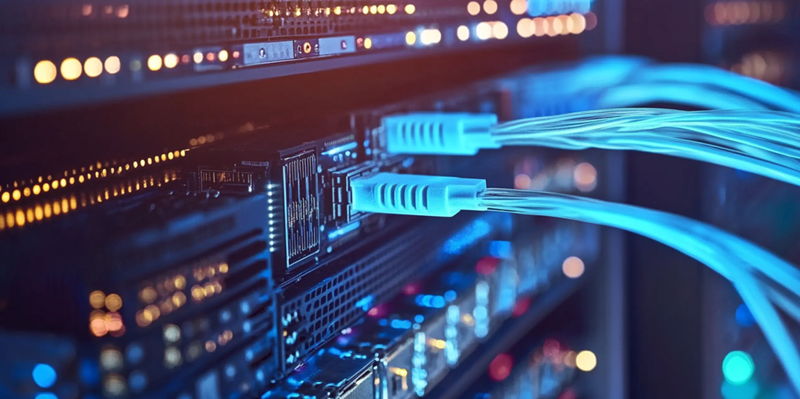In the era of Artificial Intelligence (AI), there is an urgent need for IT infrastructure transformation to fully harness AI’s potential and drive innovation forward. By focusing on making infrastructure more adaptable, scalable, and secure, organizations can create an environment capable of supporting the advanced computational tasks required by AI technologies.
Topic and Subject of Analysis
The central theme here is the evolving needs of IT infrastructure to support AI deployment. The emphasis lies on the critical transition from outdated legacy systems to updated platforms that are flexible, scalable, and equipped to handle the high-performance computing demands intrinsic to AI technologies.
Common Themes and Key Points
The article touches on several core themes. First is the necessity for infrastructure modernization to overcome the inadequacies of legacy IT systems. These outdated systems often become resource-intensive, slow down productivity, and hinder innovation, making them ill-suited for AI-driven operations. The need for adaptability and scalability is another crucial aspect. Modern AI infrastructure requires systems that can evolve with rapid technological changes and scale to manage fluctuating workloads efficiently. The suggestion of modular and cloud-based solutions emerges strongly as a strategy to achieve this.
For high-performance computing (HPC), AI workloads demand advanced processing capabilities, typically supplied by specialized processors like GPUs and TPUs. Incorporating this high-performance hardware becomes essential to meet AI’s computational needs. Security and compliance also take center stage as AI becomes more widespread. Organizations must adopt robust security measures, such as encryption, access controls, and regular backups, to protect against cyber threats like ransomware and phishing.
The article further underscores the significance of effective data management in reducing attack surface areas and ensuring compliance with data protection laws. It advocates for minimal data collection combined with multi-cloud storage solutions to achieve these goals.
Overarching Trends and Consensus Viewpoints
A systematic shift towards modern infrastructure to support AI is widely acknowledged. This consensus includes the adoption of cloud solutions, high-performance computing capabilities, and modular frameworks. Furthermore, the increasing incidences of cyber threats have highlighted the need for rigorous security protocols. AI-powered security solutions are particularly favored for their real-time threat detection and response capabilities. Maintaining regulatory compliance is another crucial factor, ensuring transparent and accountable data handling processes in the AI integration journey.
Streamlined Summary
The article comprehensively outlines the steps required for modernizing IT infrastructure to support AI technologies. Emphasizing the shift from legacy systems to more adaptable and scalable frameworks, it underscores the necessity for modular and cloud-based infrastructures. High-performance computing capabilities, particularly through advanced processors like GPUs and TPUs, are essential to address AI’s computational demands.
Regarding security, the narrative highlights the importance of adopting advanced measures such as encryption, access controls, and AI-powered threat detection systems to mitigate the rising threat of cyberattacks, particularly ransomware and phishing. The significance of compliance with data protection regulations is also emphasized, advocating for transparent data handling practices and minimal data collection to reduce exposure.
Main Findings
The analysis concludes that existing legacy infrastructure is insufficient for managing AI workloads, which necessitates a comprehensive overhaul. Modular and cloud solutions offer the flexibility and scalability required to meet AI’s dynamic demands. Implementing advanced security protocols is critical for protecting against the heightened threat landscape, while adhering to regulatory requirements ensures ethical and compliant deployment of AI technologies.
Conclusion
In today’s AI-driven landscape, there’s an urgent need for transforming IT infrastructure to fully leverage AI’s capabilities and stimulate ongoing innovation. This transformation is essential because AI technologies demand robust support for their advanced computational tasks. By focusing on key aspects such as adaptability, scalability, and security, organizations can build environments conducive to efficiently running complex AI algorithms.
Adaptability is crucial because AI systems often require rapid adjustments to accommodate new datasets or algorithms. Scalable infrastructure ensures that as data volumes grow or as computational demands increase, the system can handle the load without performance degradation. Security, on the other hand, protects sensitive data and AI models from potential cyber threats, maintaining integrity and trustworthiness.
In essence, revamping IT infrastructure to meet these requirements allows organizations to maximize the benefits of AI. It positions them to explore new frontiers in machine learning, deep learning, and data analytics, ultimately fostering an atmosphere where innovation can thrive and substantial advancements can be achieved. This modernization effort is not optional but a necessity in staying competitive and relevant in an AI-driven world.

